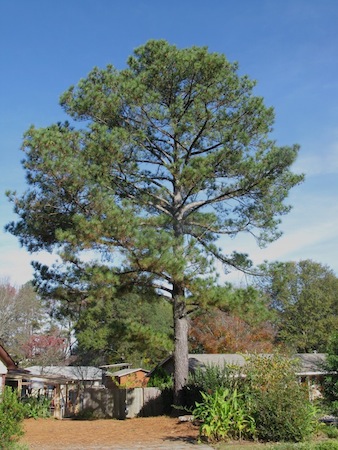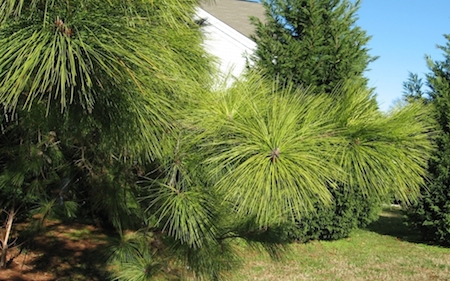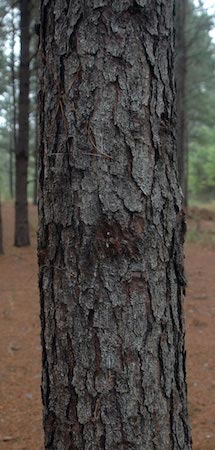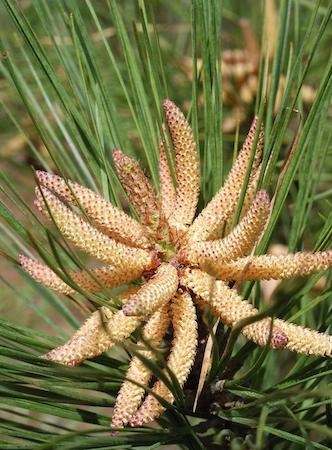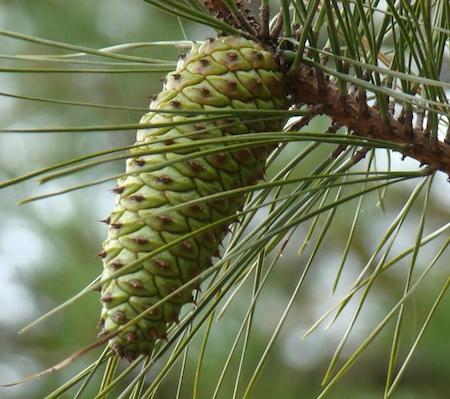Loblolly Pine
Specifications
- Latin (scientific) name: Pinus taeda. Taeda is an ancient Latin name of resinous pines.
- Life expectancy: 275 years
- Height: 148 feet
- Circumference: 9-1/2 feet
-
The height and circumference measurements listed here are for the largest-known loblolly pine tree in Atlanta. This tree is located in Fernbank Forest.
-
Special characteristics:
This is a majestic tree, especially when it is mature. As it ages, it changes its form: Young trees are characterized by a central trunk (leader) with a pyramid-shaped crown (excurrent); older trees have a rounded, spreading crown (decurrent) with dense foliage. Sometimes the top forks off to create two tops and a broader rounded crown. The decurrent form needs room to spread, which means you’ll find it in open areas or the edges of stands, as opposed to tightly packed forests where the trees have to compete for sunlight.
Pine trees are very limber. They sway in the wind, much more than their hardwood companions. If these trees didn’t flex, they would all be on the ground on an extremely windy day.
-
Annoyance factors:
Young trees with a high crown swing vigorously in the wind, making folks close their eyes and maybe say a few prayers. Add some sizable pine cone bombardment and you have an event that is quite unnerving.
Pollen! When pine trees are in flower in the spring, everything is covered in the pine tree's yellow pollen. And when the cones start to fall in autumn, they can be very hazardous to people who are not watching where they are walking!
During an extreme ice storm, pine trees will shed some seriously large green branches. The branches break off with a snap and come crashing down. It sounds like rifle shots going on during a full blown ice storm. A tree with a lean can be pulled down with heavy ice loading. Really scary!
Breakage: these trees often develop a defect on the trunk, called a canker. These are weak sections caused by a fungus. It can cause the tree to break during wind storms or ice events.
Dead wood: this tree is economical as far as getting rid of branches that are not getting sunlight. You’ll see lots of deadwood on the lower half of the tree. The deadwood does not stay long: it usually breaks off fairly soon.
The tree inspector will be able to identify what particular trees are at risk. You don’t have to be extreme by cutting all your pine trees down. Just remove the trees that threaten you and your home.
-
Fun Facts:
The word “loblolly” is in the dictionary and describes a mud puddle. This is appropriate for this species of tree, because it loves wet areas.
This tree is very important commercially. It grows fast and you can have a crop ready for harvest (pulp, lumber) in 25 years or less. You’ve heard of the company Georgia Pacific, right? This company has major tree farm holdings in our state. But the “Pacific” part of this company is dead in the water. They’ve cut down most of the trees out west and returned back south. You can see these large tracts of trees in south Georgia. You’ll know it when you see miles and miles of only one tree species. This is something nature does not do: grow monocultures. It’s a human-induced phenomena.
-
Photo Credits:
Cone: Franklin Bonner, USFS (ret.), Bugwood.org
Bark: Chris Evans, University of Illinois, Bugwood.org
Flowers: Erich G. Vallery, USDA Forest Service - SRS-4552, Bugwood.org
Needle clusters: Richard Webb, Bugwood.org
Tree: Peter Jenkins, TreeInspection.com

